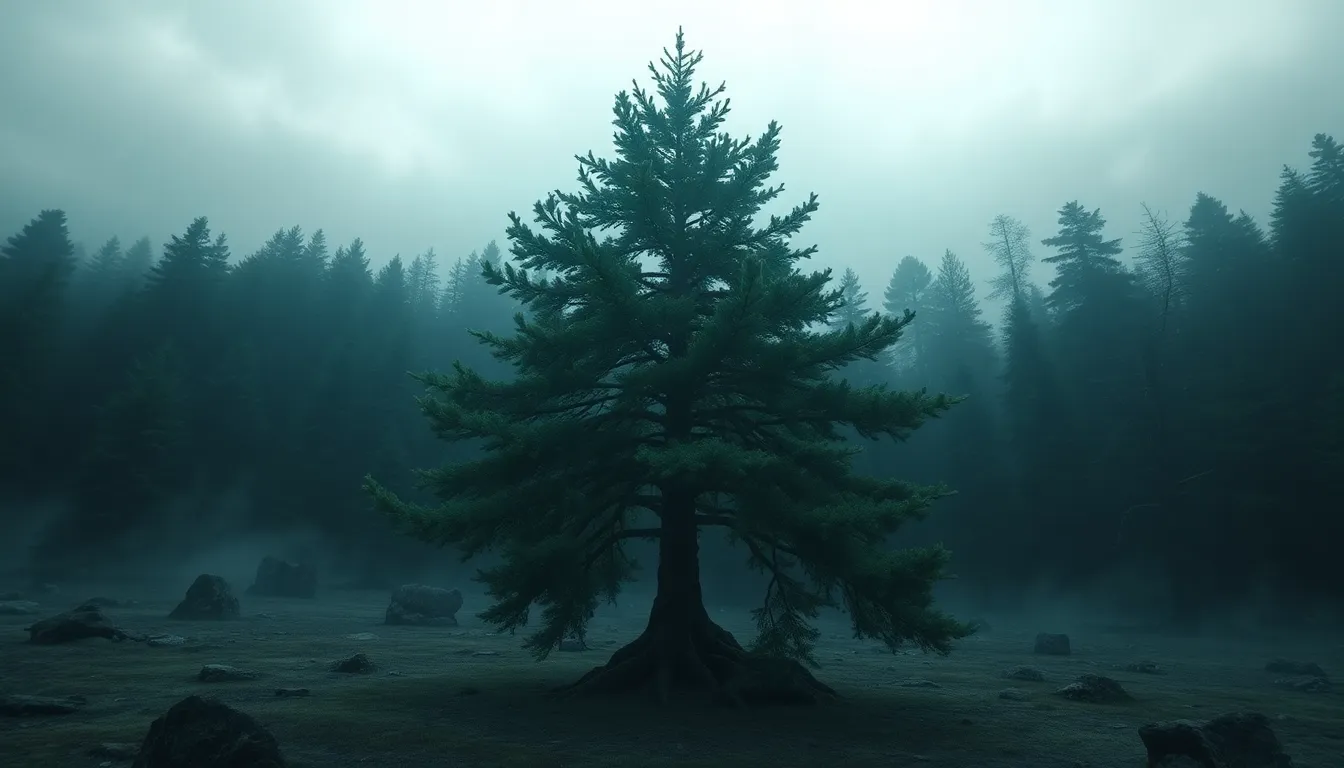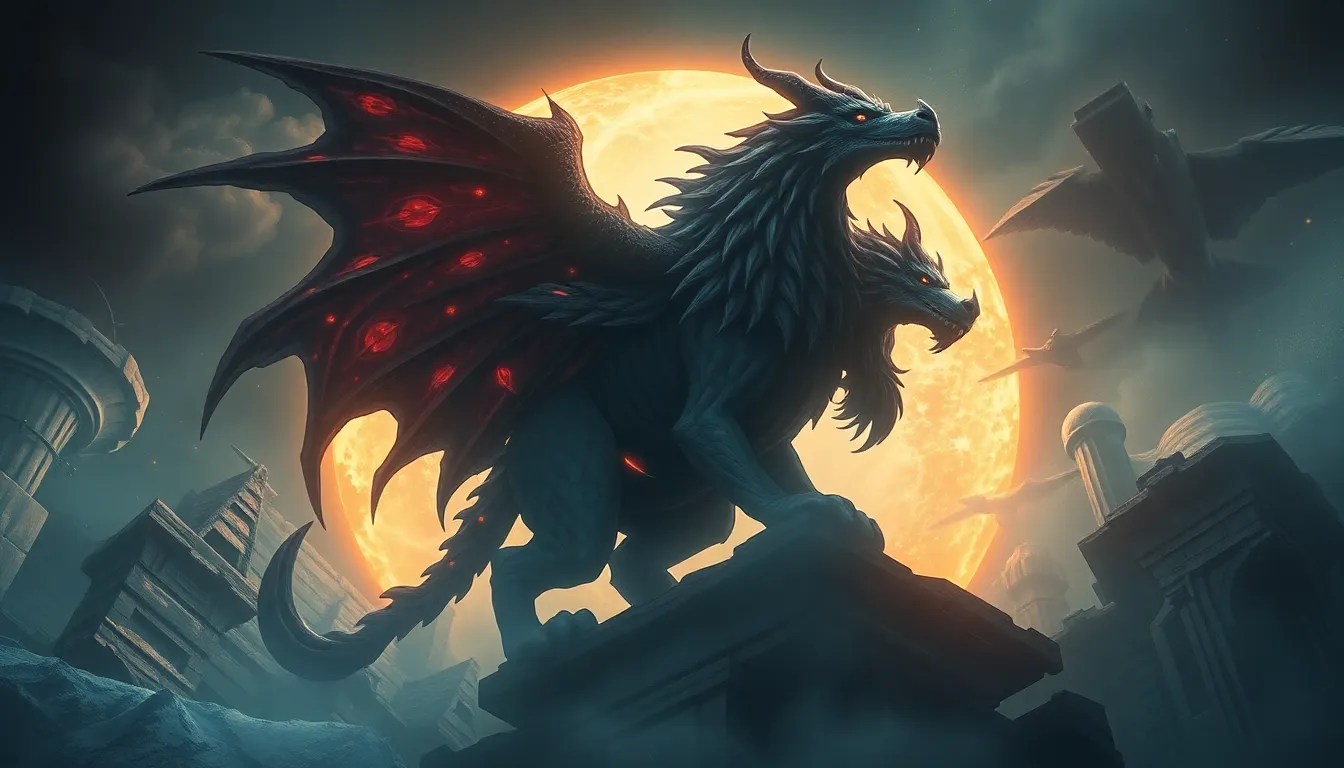The Myth of the Sacred Spruce: A Tree of Strength and Solitude
I. Introduction
The Sacred Spruce is more than just a tree; it is a symbol that has woven itself into the cultural and spiritual fabric of various civilizations throughout history. Revered for its majestic height and resilient nature, the spruce tree has been a significant element in many indigenous traditions and folklore. Its presence often signifies strength, endurance, and a deep connection to the earth.
This article aims to explore the myths and realities surrounding the Sacred Spruce, delving into its historical significance, ecological importance, and the role it plays in modern society. By examining both the cultural narratives and the ecological truths, we can gain a deeper appreciation for this remarkable tree.
II. Historical Significance of the Spruce Tree
The spruce tree has held a vital place in the hearts and minds of people for centuries, particularly among indigenous cultures.
A. Indigenous beliefs and traditions related to the spruce
Various indigenous tribes have viewed the spruce as a sacred entity. For many, it serves as a symbol of life and sustenance, providing materials for shelter, tools, and fuel.
B. Role of spruce in ancient rituals and ceremonies
The spruce is often incorporated into rituals, such as:
- Weddings, where branches may be used for decoration and blessings.
- Funerals, where the wood is sometimes used to create coffins, symbolizing the cycle of life.
- Seasonal festivals, celebrating the tree’s resilience and the bounty of nature.
C. Symbolism of strength and resilience in folklore
In various folklore, the spruce is portrayed as a steadfast guardian of the forest, a tree that withstands harsh weather and provides shelter to countless creatures. Its ability to thrive in challenging conditions makes it a symbol of resilience and strength.
III. The Mythology Surrounding the Sacred Spruce
As with many cultural symbols, the Sacred Spruce is surrounded by a rich tapestry of myths and legends.
A. Common myths and legends associated with the Sacred Spruce
In many cultures, it is believed that the Sacred Spruce serves as a bridge between the physical and spiritual worlds. Stories often depict these trees as the homes of spirits or deities.
B. Comparative analysis of similar myths in different cultures
Across different civilizations, the symbolism of the spruce tree can be compared:
- In Norse mythology, the Yggdrasil, an enormous ash tree, shares similarities with the spruce in its role as a cosmic connector.
- Native American folklore often features the spruce as a protector of the forest and a provider of wisdom.
C. The evolution of the spruce myth over time
Over centuries, the story of the Sacred Spruce has transformed, adapting to new cultural narratives while retaining its essence as a symbol of strength and solitude.
IV. Ecological Importance of the Spruce Tree
Beyond its mythological significance, the spruce tree plays a crucial role in maintaining ecological balance.
A. Overview of the spruce ecosystem and its biodiversity
Spruce trees provide habitat for numerous species, including:
- Birds, such as the spruce grouse and various woodpeckers.
- Mammals, including squirrels and deer.
- A variety of insects and fungi that thrive in their ecosystem.
B. Role of spruce in forest ecology and climate regulation
Spruce trees contribute to forest health by:
- Stabilizing soil and preventing erosion.
- Sequestering carbon, thus playing a role in climate regulation.
- Supporting the water cycle through transpiration.
C. Threats to spruce forests and conservation efforts
Despite their importance, spruce forests face numerous threats, including climate change, logging, and pests. Conservation efforts are crucial to protect these vital ecosystems and include:
- Establishing protected areas.
- Restoration projects to rehabilitate damaged forests.
- Community engagement and education about sustainable practices.
V. The Symbolism of Strength in the Sacred Spruce
The characteristics of the spruce tree embody strength in various ways.
A. Characteristics that embody strength: growth, durability, and adaptability
Spruce trees are known for their:
- Impressive height, reaching up to 200 feet.
- Durable wood, which is resistant to decay.
- Ability to thrive in a range of environmental conditions.
B. Examples of how the spruce has been a metaphor for personal resilience
The spruce serves as a metaphor for resilience in human lives, often appearing in literature and personal narratives where individuals face and overcome challenges.
C. The impact of the spruce on art, literature, and culture
From paintings that capture the serene beauty of spruce forests to poems that reflect on their quiet strength, the spruce tree has inspired countless artists and writers.
VI. Solitude and Reflection: The Spiritual Aspect of the Sacred Spruce
The Sacred Spruce also serves as a sanctuary for solitude and reflection.
A. The role of spruce forests in providing spaces for solitude and contemplation
Many people seek out spruce forests for their serene environment, where they can connect with nature and find peace away from the hustle of daily life.
B. Personal narratives and testimonials about experiences in spruce forests
Individuals often share transformative experiences in spruce forests, describing feelings of tranquility and clarity that come from spending time among these ancient trees.
C. The connection between nature, solitude, and mental well-being
Research indicates that spending time in nature, particularly in forested areas like spruce groves, can significantly improve mental health, reduce stress, and enhance overall well-being.
VII. The Sacred Spruce in Modern Society
In contemporary times, the myths surrounding the Sacred Spruce continue to resonate.
A. The relevance of the spruce myth in contemporary environmental movements
The Sacred Spruce serves as a powerful symbol in environmental advocacy, representing the need to protect our natural resources and preserve biodiversity.
B. Influence of the spruce on modern spirituality and wellness practices
Many wellness practices now incorporate the symbolism of the spruce, promoting mindfulness and connection to nature as essential components of holistic health.
C. The spruce as a symbol of hope and strength in challenging times
In times of adversity, the spruce tree stands as a reminder of resilience and the enduring strength of nature, inspiring individuals to persevere.
VIII. Case Studies: Sacred Spruce Trees Around the World
There are numerous notable sacred spruce trees, each with its unique story.
A. Notable sacred spruce trees and their stories
Some of the most revered include:
- The ancient spruce of the Taiga, standing for centuries as a witness to history.
- The “Tree of Life” in various indigenous cultures, serving as a central figure in myths and stories.
B. Cultural practices and preservation efforts associated with these trees
Many communities engage in practices aimed at preserving these sacred trees, emphasizing sustainable use and respect for their ecological roles.
C. Lessons learned from communities that revere the spruce
Communities that honor the spruce often demonstrate a profound understanding of ecological stewardship and the importance of maintaining a balance between nature and human activity.
IX. The Future of the Sacred Spruce: Conservation and Awareness
As we look to the future, the conservation of the Sacred Spruce remains a critical concern.
A. Current conservation initiatives aimed at protecting spruce trees
Numerous organizations are actively working to protect spruce forests through:
- Reforestation projects.
- Legislation aimed at preserving natural habitats.
- Community education programs focused on sustainable practices.
B. The role of education in preserving the myth
Educating future generations



